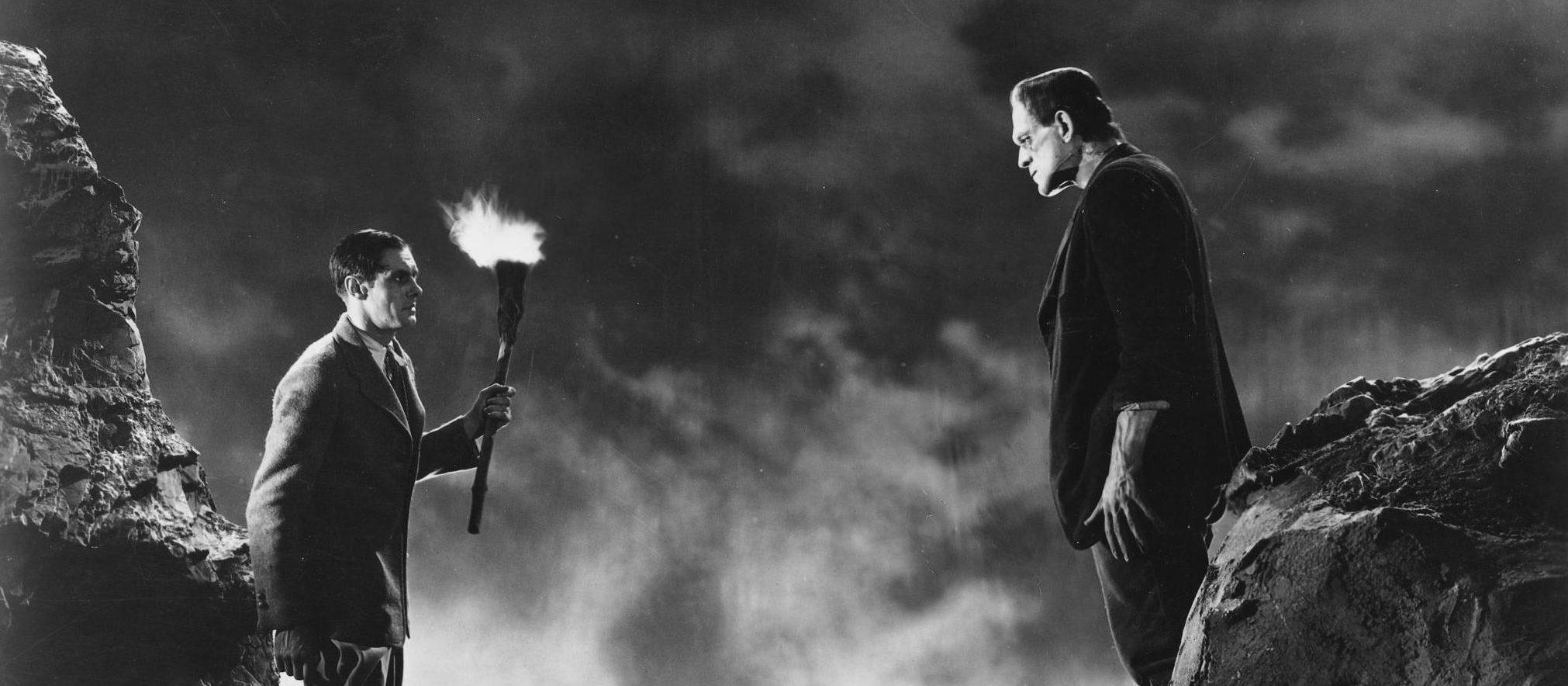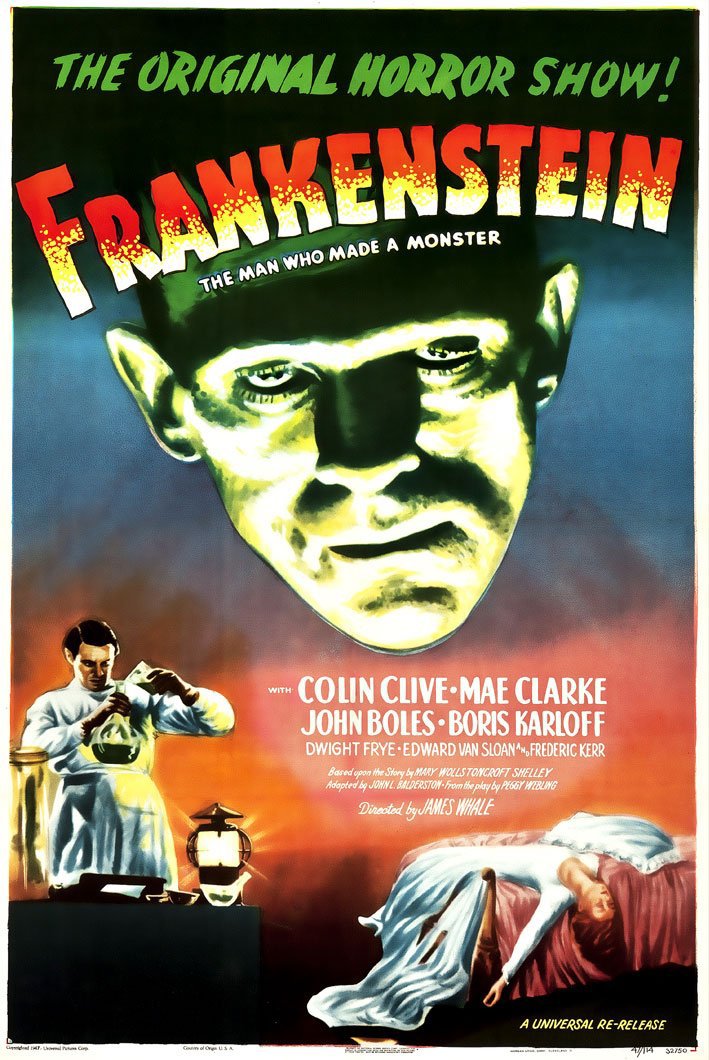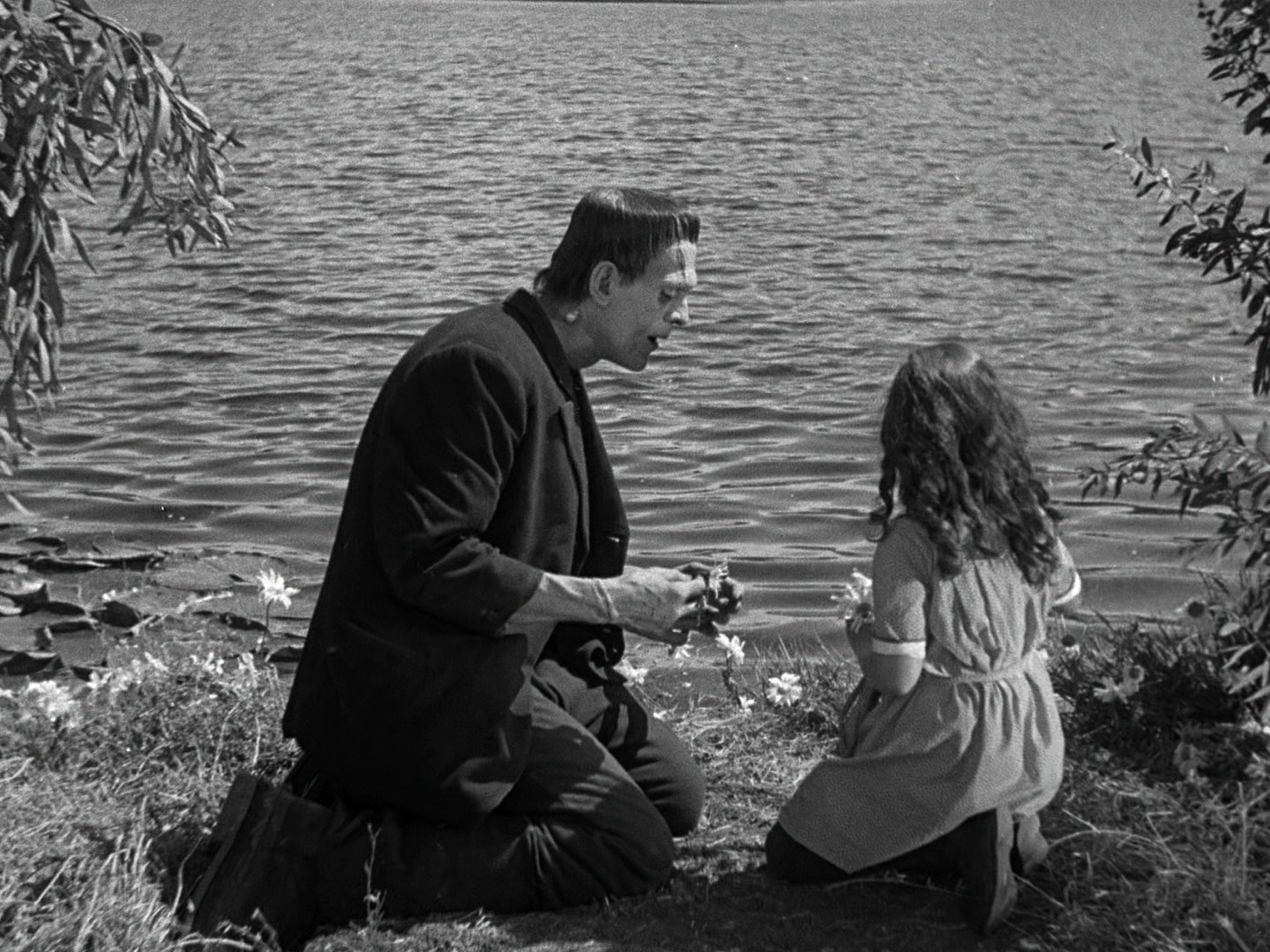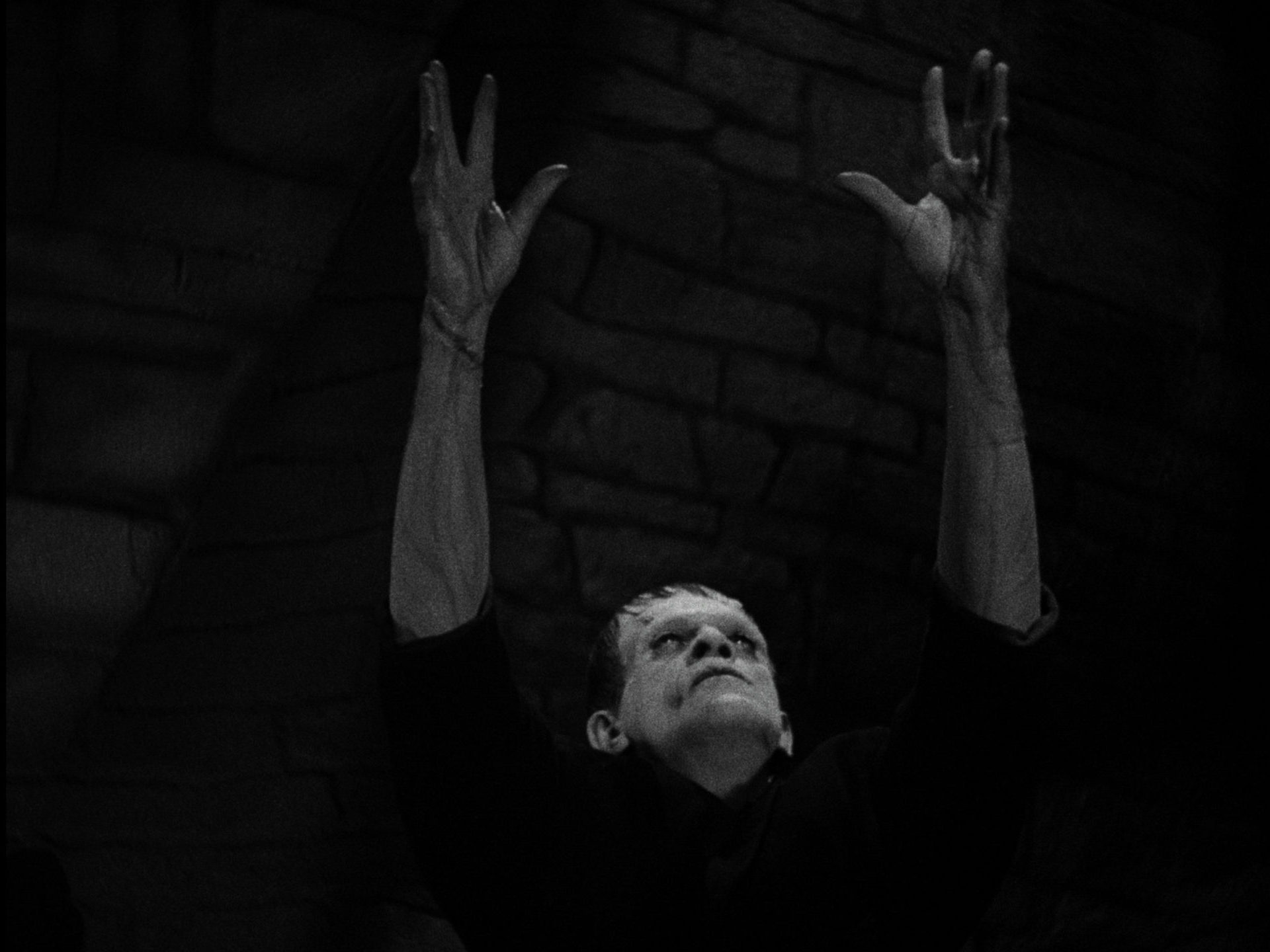

“Where should we be if no one tried to find out what lies beyond? Have you never wanted to look beyond the clouds and the stars, or to know what causes the trees to bud? And what changes the darkness into light? But if you talk like that, people call you crazy.”
Mary Shelly’s 1818 novel Frankenstein; or the Modern Prometheus had been adapted several times during the silent era, but it was James Whale’s 1931 sound film starring Boris Karloff as the monster that cemented the character as an icon of pop culture. Indeed, several elements original to Whale’s Frankenstein have become synonymous with the character—the Monster’s lightning strike nascence; the hunchbacked “Igor” character; the mad scientist crying “IT’S ALIVE!” Which of those haven’t you absorbed through cultural osmosis? Beginning with a fourth wall break to warn audiences of the horrors they’re about to witness, it conveys in barely more than a single gonzo hour an exceedingly creative tale that is as entertaining as it is familiar.
Dr. Frankenstein (Colin Clive) and his assistant Fritz (Dwight Frye) are sequestered in the Bavarian Alps where they’ve been surreptitiously attempting to “create” a parody of humanity from the amalgamated remains of several recently-dead specimens. Society frowns upon such profane scientific pursuits, and so the pair have resorted to pilfering graves and cutting down recently hanged criminals for their fleshly leftovers. The finishing touch is a brain, stolen from the classroom of Frankenstein’s former mentor, Dr. Waldman (Edward Van Sloan, who also delivered the opening monologue). However, in a fright, Fritz manages to return not with the healthy brain he’d been instructed to fetch, but with the criminal brain to which it had been compared during the professor’s university lecture.

Meanwhile, Frankenstein’s fiancée Elizabeth (Mae Clarke), worried about her betrothed’s reclusiveness and eccentric ambitions, pays a visit along with her friend Victor (John Boles) to the office of Waldman. Though the professor suggests that Frankenstein’s pursuits in chemical galvanism and electrobiology have taken him beyond the academic boundaries of the school—and thus he has ceased to consider the mad scientist a pupil—he nevertheless agrees to travel with Elizabeth and Victor to the remote watchtower-cum-laboratory, where they barge in on the proceedings just as they reach their climax and The Monster (Karloff) comes to life in all his tall-foreheaded, neck-bolted glory.
Of course, where we expect a brutalizing fiend to rise from the grave (or the electrically-charged operating table, as the case may be), we get a Monster who is docile and sympathetic, his plight laced with pathos. Frankenstein expects his unholy creation to be a malicious savage and treats him so, thus creating a vicious cycle that builds spiraling momentum until the townsfolk elect to set a windmill ablaze with the creature trapped inside; a creature, mind you, that was brought into the world—or returned to it—with no say in the matter and immediately subjected to torture at the hands of its hubristic progenitor.
People like to read homosexuality into Whale’s films because he was gay; but infanticide seems a much more more prominent theme here. This is especially true considering the Monster’s infantile inability to communicate. (By contrast, the articulate creature in Shelley’s novel adds moral and philosophical complexities. “I ought to be thy Adam, but I am rather the fallen angel,” he says to his creator.) Karloff’s grunts, groans, and hisses offer a spectrum of emotions—so much so that he remains sympathetic even after drowning a young girl—however, the entire film hinges on his lack of understanding and his childlike innocence.

While the script is admittedly quite shaky and the performances generally unexceptional, Whale’s German Expressionist-inspired direction in conjunction with Karloff’s turn as the Monster (including Jack Pierce’s make-up work) more than compensate. The film is a visual spectacle, of course, but the early sound era soundtrack is also noteworthy, full of bangs and thuds and cracks of lightning that enliven the entire production.
Dracula may have kicked off the Golden Age of horror cinema and paved the way for the Universal Monster phenomenon, but it was Frankenstein that became a touchstone for generations to come due to its iconography, spirited direction, and humanistic undertones. In a film brimming with remarkable images, none is quite as effective as the Monster reaching toward the rays of sunshine that have slipped down into his gloomy prison.